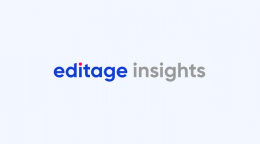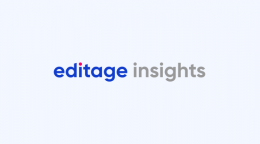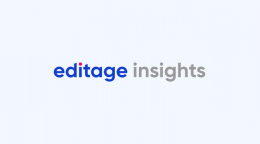How to identify coercive citation requests from an editor
Coercive editorial practices
Some journal editors practice leverage over authors submitting their manuscripts to the journal and try to coerce them into citing published articles from the same journal to artificially inflate the journal’s impact factor. This series of posts will help authors understand how to identify a coercive citation request by an editor and how to deal effectively with such requests without ruining their chances of publication in the journal.

Discussions about scientific misconduct are no longer just a closely held, whispered communication between scientists. Over the past decade, commentary about the integrity of the scientific endeavor has been expressed in popular newspapers, blogs and public debate, clouding the integrity of the scientific endeavor. Authors engage in nefarious practices to lubricate the pace at which they can ascend the academic ladder. Universities promote those who publish often and who become recognized as significant contributors by their peers, as measured by the number of citations they receive. In some settings, universities have granted cash bonuses to authors who publish in high status journals – a practice that has induced some authors to ‘game-the-system.’ However, authors are not alone in manipulation: editorial malpractices also find their way into discussions in scholarly circles. One of the most common forms of editorial malpractice is citation manipulation.
Why do editors engage in coercive practices?
The manipulation of citations by editors has increased exponentially since journal ranking and prestige began to be measured by the journal Impact Factor. The metric measures the extent to which a journal’s articles are cited in the scientific literature: it quantifies the number of times a published article is later referenced by any journal. Since editors have little opportunity to influence the acceptance of articles citing published work from their own journal in other journals, one device some journal editors have engaged in is inducing authors to reference articles published in their own journal.
In an effort to promote their journal’s visibility via a higher Impact Factor, some journal editors ask new authors submitting manuscripts to their journal to embed inappropriate citations in their papers. When an editor practices leverage over an author before issuing a disposition about reject/accept, then that can easily feel coercive. An editor might insinuate to an author that their work will have an improved likelihood of being accepted if the author cites papers from the journal to which they are submitting. This can easily feel like a ‘transaction’: that is, if you cite the papers I recommend, then your paper will be accepted. This article briefly explores coercive editorial practices and suggests how an author might react when there is a suspicion of editorial manipulation.
Are citation recommendations always coercive?
First, let us understand why authors provide references at all. Citations serve to provide an intellectual or technical foundation to justify the relevance of their submitted research investigation. Science builds upon the foundation of prior work. While one important purpose for referencing is to establish the priority and sequence of the development of ideas, for the author it is essential to be able to point to how the author’s study is a natural ‘next step’ in a particular thread of investigation. A citation provides an authoritative source to substantiate, support and confirm that the author’s work is relevant and scientifically valuable. An article without citations is inconsistent with the modern concept of scientific dissemination.
A problem arises when an editor practices extortion by subtly or explicitly requiring an author to incorporate irrelevant reference from the targeted journal. Not all recommendations for additional references made by an editor or a reviewer are for nefarious purposes. In fact, since most editorial teams are more experienced than their submitting authors, it should be no surprise that the editorial team can recommend additional support. The author should be sensitized to whether or not the suggestions are to provide an even stronger justification for the author’s hypotheses. For example, an editorial team member might well know of investigations into a closely allied field for which an embedded citation to that work provides greater recency and a stronger foundation for the author’s arguments. The editor might know of a potentially supportive citation from an article that is queued for publication but not yet indexed by the major search engines. If the recommended citation is to the niche-journal to which the author is submitting, then the suggested article may add to a rationale for why an author’s work is eligible for acceptance.
Thus, it is entirely possible that editors and reviewers will have a more up-to-date understanding of the relevant literature than their submitting authors. An editor might want to broaden a submitting author’s perspective related to the incorporation of published information from international sources about which an author is unaware. In the context of what constitutes coercive editorial practices, the primary issue is whether the transaction between the editor and the author is voluntary and particularly whether the author can decline the editor’s suggestion without fear that this will diminish the likelihood of acceptance of the submission.
The presumption that all editor and reviewer recommendations are self-serving is bound to the notion that authors are the supreme authority in selecting citations for their work. This is clearly an error. It presumes that no one except the author can better know the research topic. Ideally, authors should have the final decision on what references are included since ultimately they are responsible for the article’s content; however, having said that, authors should appreciate the possibility that a reviewer or an editor can contribute something of value to the final product.
The self-serving selection of references is not just an editor problem. Authors, too, spice their writing with citations to their prior publications even when they are only marginally relevant. Reviewers have been known to promote the visibility of their own work by recommending to an editor that their own publications should be incorporated into the author’s reference list (when their goal is to highlight their own research). But, again, if the reviewer was selected because of a special depth in scientific knowledge in that dimension then the reviewer may well be better acquainted than the author with prior publications (some of which, necessarily, will be their own). There is plenty of uncertainty as well as blame to distribute in terms of the biased selection of citations.
How can an author distinguish a coercive citation request from a legitimate one?
It is necessary to separate out editorial citation recommendations resulting from an effective peer review process aimed at improving a paper, by comparison to coercive practices. How can an author identify the difference between these two motivations? Foremost, the author must use the “smell test.” That is, if it does not smell like coercion, it probably is not coercion. If the editor or the reviewer makes a logical suggestion that ‘feels right’ as a source for solidifying the author’s argument, regardless of its origin, then there is no logical reason to suspect the editor’s motivation. It is natural to presume that an editor has the strongest knowledge in the field that their journal represents – that is likely one of the most important criteria that got them selected as editor.
Coercive recommendations, in contrast, are likely include no justification or explanation about the necessity to bolster the paper’s arguments by incorporating more attributions. Of course, when those additional recommendations are exclusively from the editor’s own journal, then the editor’s motivation might be suspicious. However, it’s easy to conceive of circumstances in a submission founded upon single-nation studies but which is submitted to an international journal. An editor may well ask the author of a study of Turkish adolescents’ self-image, for example, to compare the findings with parallel studies on adolescents’ self-image from an array of other countries. Again, if the editorial request is accompanied by a rationale explaining how the research is strengthened by reference to a portfolio of parallel investigations (even those which happen to be from the targeted journal), then the author needs to gauge whether or not this adds to the embedded value of their submission.
The most blatant example of coercion, regardless of whether the language used by the editor is direct or circuitous, is a simple request to add a specific number of articles from the targeted journal, unsupported by any rationale. If the between-the-lines implication is “add citations or risk rejection” then coercion is virtually assured, motivated by an attempt to engineer an increase in the journal's Impact Factor.
Once you are able to identify a coercive citation request, the next step is to understand how to handle such requests so that you do not end up using irrelevant citations in your manuscript. In the next article of this series, I will explain how an author can deal effectively with coercive citation requests from the editor or reviewer.
Recommended reading:
Published on: Oct 09, 2017
Comments
You're looking to give wings to your academic career and publication journey. We like that!
Why don't we give you complete access! Create a free account and get unlimited access to all resources & a vibrant researcher community.

Subscribe to Journal Submission & Peer Review
















